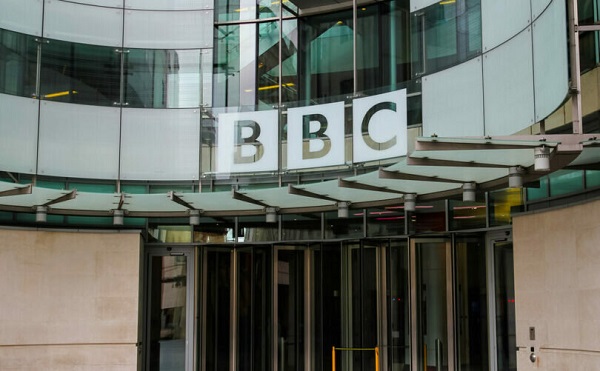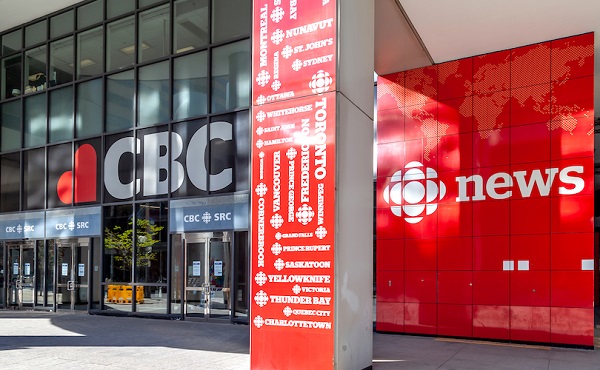National
Trudeau’s $9 Million Condo Scandal: Elites Party in New York While Canadians Struggle at Home
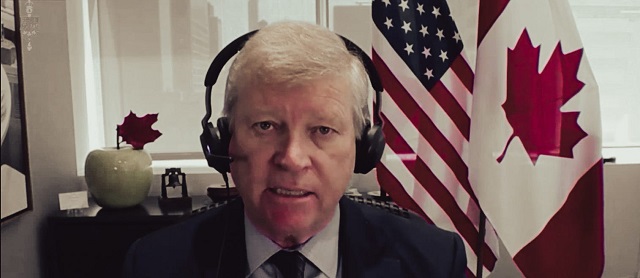
From The Opposition News Network
By Dan Knight
It’s no secret that Justin Trudeau and his Liberal cronies love to live large. But this latest scandal? It’s a new low, even for them. We’re talking about a $9 million luxury condo—yes, you heard that right—on Billionaire’s Row in New York City, bought for a Trudeau-appointed diplomat while millions of Canadians are barely scraping by.
What’s worse? Trudeau himself seems to be right at the heart of this.
Let’s break down the facts that emerged during Meeting No. 137 of the Standing Committee on Government Operations and Estimates (OGGO), and you’ll see exactly how Trudeau’s government, under the watchful eye of his loyal minister Mélanie Jolie, pulled this off.
The Timeline of Trudeau’s Elitist Condo Scheme:
1. February 2023: Tom Clark, a former journalist and long-time friend of the Liberal elites, is appointed by Trudeau’s government as Consul General in New York. A cozy appointment, no doubt, for someone with deep ties to the Liberal establishment.
2. April 27, 2023: The Prime Minister himself—yes, Justin Trudeau—drops by Clark’s old New York residence for a dinner. Imagine the wine flowing and the conversation going, all while the rest of Canada is dealing with a collapsing economy, skyrocketing inflation, and an ongoing housing crisis.
3. April 28, 2023: The very next day, Trudeau and Clark are seen together in a motorcade cruising the streets of New York City. What exactly were they discussing? A new condo perhaps? It’s hard to believe that this kind of luxury real estate plan wasn’t at least mentioned during their cozy ride.
4. Spring/Summer 2023: Global Affairs Canada—overseen by Trudeau’s trusted Minister Jolie—suddenly identifies problems with the old residence. That’s right, just a few months after Trudeau’s visit, the decision is made to start looking for a new, more luxurious residence. Coincidence? Hardly.
5. April 17, 2024: An email from Global Affairs states that Tom Clark was instrumental in giving the green light for the purchase of the $9 million condo. The deal is pushed through, and the taxpayer is stuck with the bill.
6. July 12, 2024: The media finally breaks the story about the purchase of the $9 million luxury condo on Billionaire’s Row, one of the most expensive neighborhoods in New York. Public outrage begins to grow as details about this opulent purchase come to light.
7. July 25, 2024: A bogus correction is issued by Global Affairs, claiming that Tom Clark was not involved in the purchase. Conveniently, this correction comes one day after this very committee ordered documents on Clark’s involvement. Sound fishy? It should.
Clark’s Cozy Deal and Trudeau’s Role
Here’s what we know: Trudeau’s government made a $9 million purchase for Tom Clark, a man with deep ties to the Liberals, shortly after Trudeau himself visited Clark’s old residence. Now, emails show Clark was directly involved in the decision to buy the new place, but when he appeared before the committee, he suddenly couldn’t remember any involvement. Instead, he passed the blame onto Global Affairs Canada.
Now, here’s where it gets worse. Documents show that Clark was instrumental in the decision to buy this opulent residence. Emails from within Minister Mélanie Joly’s own department reveal that Clark himself gave the “green light” on the purchase. But when Clark appeared before the committee, he suddenly had a case of selective amnesia, denying any involvement in the decision. According to him, it was all Global Affairs Canada’s doing. He claims he was just an innocent bystander, touring the property “out of curiosity.”
Are we really supposed to believe that? This is a man who, for decades, worked in media and is well-versed in how power operates. The idea that Clark wasn’t aware of the optics or didn’t say a word when shown this mansion is laughable. What’s even more convenient is that a “correction” from Global Affairs magically appeared one day after the committee requested documents about Clark’s involvement. They want us to believe that all of this is just a coincidence, a bureaucratic hiccup. Sure.
But let’s not forget who runs Global Affairs—none other than Minister Mélanie Jolie, one of Trudeau’s closest allies. Jolie has twice appointed Clark to key roles: once as head of an advisory committee recommending appointments to CBC, and then again as Consul General in New York. And it’s Jolie’s department that now seems to be covering for Clark in this scandal, issuing a correction that conveniently contradicts their own internal emails.
So, who’s responsible? The buck stops with Minister Jolie—and ultimately with Justin Trudeau.
The Real Problem: Trudeau’s Elitism and Out-of-Touch Government
While Tom Clark is now enjoying his luxurious $9 million condo—complete with swimming lanes, golf simulators, and some of the most expensive appliances money can buy—ordinary Canadians are lining up at food banks, barely making rent, and trying to survive in Trudeau’s broken economy.
Let’s break down just how absurd this situation is: for this $9 million palace, Clark pays a laughable $1,800 a month. Meanwhile, the actual cost of living in a place like that? Around $42,000 a month. The difference? You, the Canadian taxpayer, are picking up the tab for Clark’s personal playground while you struggle to pay your bills.
And let’s be clear: Clark wasn’t some innocent bystander in this. He toured the condo, saw the luxury, and didn’t once think to say, “Hey, maybe this is too much, especially when people back home can’t even afford to live.” Why? Because this is the Trudeau mindset. The elites deserve the best, and the rest of us? We can pay for it.
Why Jolie Must Testify
This scandal goes straight to the top. Mélanie Jolie must come before the committee and explain how her department managed to spend $9 million on a condo for one of Trudeau’s buddies. She needs to answer for the emails that say Clark was involved, even though they’re now trying to claim he wasn’t. And, most of all, she needs to explain why this government continues to indulge its inner circle while Canadians suffer.
It’s time for real accountability. Trudeau and his ministers cannot continue to dodge these scandals, pretending like they have no part in the decisions being made. Minister Jolie needs to testify, and the Canadian public deserves answers. After all, you’re the ones paying for it.
This isn’t just about one condo; it’s about a government that’s lost touch with reality, that believes it can spend your money however it likes, with no consequences. The Liberals claim to care about the middle class, but when it comes down to it, they’re more interested in living large—and making sure their friends do too.
Minister Jolie, it’s time to step up and explain why you let this happen. Canadians are watching.
You can subscribe for free to The Opposition with Dan Knight, but for the full experience, you’ll need to upgrade your subscription.
Energy
A picture is worth a thousand spreadsheets

From Resource Works
What if the secret to understanding Canada’s energy future lies not in spreadsheets but in storytelling?
When I think about who has done the most to make sense of Canada’s energy story — not just in charts and forecasts but in human terms — Peter Tertzakian sits near the top of that list. He’s an energy economist, author, and communicator who has spent decades helping Canadians understand the world beneath their light switches and fuel gauges — and why prosperity, energy, and responsible development are inseparable.
Peter is the founder and CEO of Studio.Energy. He is also widely known as the founder of the ARC Energy Research Institute and co-host of the ARC Energy Ideas podcast, alongside Jackie Forrest. Week after week, they unpack what’s happening in the markets, in technology, and in policy, always with the rare gift of clarity. He’s also the author of two influential books, A Thousand Barrels a Second and The End of Energy Obesity, both written long before “energy transition” became a household term.
When we sat down for our Power Struggle conversation, I mentioned how remarkable it is that someone with Peter’s credentials — an economist, investor, and advisor to industry — is also an exhibiting artist whose photography can regularly be found in a gallery in the Canadian Rockies. That’s when he smiled and said what has become one of his signature lines: “I’ve always said a picture is worth a thousand spreadsheets.”

What followed was a fascinating discussion about how visual storytelling can bridge the gap between data and understanding. Peter explained that what began as a hobby has evolved into a personal quest to communicate complex energy subjects more effectively. His photographs, which range from industrial scenes to landscapes shaped by human activity, help connect the emotional and analytical sides of the energy story. The pictures, he said, reveal the same truths that his spreadsheets do — only in a way that more people can feel.
That resonates deeply with what we do at Resource Works — translating complexity into clarity so that Canadians can see how responsible resource development strengthens communities, funds public services, and opens doors for Indigenous partnerships. Like Peter, we believe that understanding energy isn’t about choosing sides; it’s about understanding systems, trade-offs, and the people behind the numbers.
Peter’s concern — and one I share — is how difficult it has become to find truth amid the noise. “People are bombarded by noise, especially today. And not all of that noise is true,” he said. “The challenge now is extracting the signal.” Whether you’re a policymaker, a corporate leader, or just someone trying to make sense of global change, Peter’s approach is to step away from confrontation and toward comprehension. His ability to blend visuals, narrative, and numbers makes complicated issues accessible without oversimplifying them.
Prosperity, Not Population, Drives Energy Demand
Our conversation also turned to the forces shaping global energy demand. Peter reminded me that the biggest driver isn’t population growth — it’s prosperity. “When a person moves from a rural setting to a city, their energy consumption goes up twentyfold, sometimes more,” he said. The story of urbanization, particularly in China, explains much of the past few decades of energy growth. Renewables have slowed that curve, but as Peter points out, “our use of fossil fuels is still growing.”
What I most admire about Peter is that he doesn’t preach. “I don’t have all the answers,” he told me. “My role is to discuss treatment options — not to perform the surgery.” It’s a refreshingly honest stance in a world where too many experts claim certainty.
On Power Struggle, Peter Tertzakian reminded me why he’s so respected across the energy world: he brings intelligence without ego, curiosity without ideology, and a deep respect for the audience’s ability to think. His work reminds us that Canada’s resource story — when told with honesty and creativity — is one of innovation, community, and shared prosperity. And that storytelling — visual, verbal, and numerical — remains our most powerful tool for navigating change.
- Power Struggle audio and transcript
- Peter Tertzakian in Arc Energy Research Institute podcasts
- Peter Tertzakian on X
- Peter Tertzakian on LinkedIn
- Stewart Muir on X
- Stewart Muir on LinkedIn
Power Struggle on social media
Alberta
Federal budget: It’s not easy being green
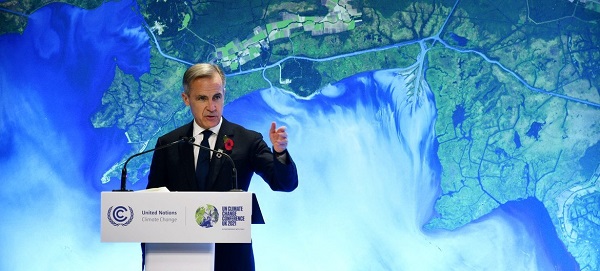
From Resource Works
Canada’s climate rethink signals shift from green idealism to pragmatic prosperity.
Bill Gates raised some eyebrows last week – and probably the blood pressure of climate activists – when he published a memo calling for a “strategic pivot” on climate change.
In his memo, the Microsoft founder, whose philanthropy and impact investments have focused heavily on fighting climate change, argues that, while global warming is still a long-term threat to humanity, it’s not the only one.
There are other, more urgent challenges, like poverty and disease, that also need attention, he argues, and that the solution to climate change is technology and innovation, not unaffordable and unachievable near-term net zero policies.
“Unfortunately, the doomsday outlook is causing much of the climate community to focus too much on near-term emissions goals, and it’s diverting resources from the most effective things we should be doing to improve life in a warming world,” he writes.
Gates’ memo is timely, given that world leaders are currently gathered in Brazil for the COP30 climate summit. Canada may not be the only country reconsidering things like energy policy and near-term net zero targets, if only because they are unrealistic and unaffordable.
It could give some cover for Canadian COP30 delegates, who will be at Brazil summit at a time when Prime Minister Mark Carney is renegotiating his predecessor’s platinum climate action plan for a silver one – a plan that contains fewer carbon taxes and more fossil fuels.
It is telling that Carney is not at COP30 this week, but rather holding a summit with Alberta Premier Danielle Smith.
The federal budget handed down last week contains kernels of the Carney government’s new Climate Competitiveness Strategy. It places greater emphasis on industrial strategy, investment, energy and resource development, including critical minerals mining and LNG.
Despite his Davos credentials, Carney is clearly alive to the fact it’s a different ballgame now. Canada cannot afford a hyper-focus on net zero and the green economy. It’s going to need some high octane fuel – oil, natural gas and mining – to prime Canada’s stuttering economic engine.
The prosperity promised from the green economy has not quite lived up to its billing, as a recent Fraser Institute study reveals.
Spending and tax incentives totaling $150 billion over a decade by Ottawa, B.C, Ontario, Alberta and Quebec created a meagre 68,000 jobs, the report found.
“It’s simply not big enough to make a huge difference to the overall performance of the economy,” said Jock Finlayson, chief economist for the Independent Contractors and Business Association and co-author of the report.
“If they want to turn around what I would describe as a moribund Canadian economy…they’re not going to be successful if they focus on these clean, green industries because they’re just not big enough.”
There are tentative moves in the federal budget and Climate Competitiveness Strategy to recalibrate Canada’s climate action policies, though the strategy is still very much in draft form.
Carney’s budget acknowledges that the world has changed, thanks to deglobalization and trade strife with the U.S.
“Industrial policy, once seen as secondary to market forces, is returning to the forefront,” the budget states.
Last week’s budget signals a shift from regulations towards more investment-based measures.
These measures aim to “catalyse” $500 billion in investment over five years through “strengthened industrial carbon pricing, a streamlined regulatory environment and aggressive tax incentives.”
There is, as-yet, no commitment to improve the investment landscape for Alberta’s oil industry with the three reforms that Alberta has called for: scrapping Bill C-69, a looming oil and gas emissions cap and a West Coast oil tanker moratorium, which is needed if Alberta is to get a new oil pipeline to the West Coast.
“I do think, if the Carney government is serious about Canada’s role, potentially, as an global energy superpower, and trying to increase our exports of all types of energy to offshore markets, they’re going to have to revisit those three policy files,” Finlayson said.
Heather Exner-Pirot, director of energy, natural resources and environment at the Macdonald-Laurier Institute, said she thinks the emissions cap at least will be scrapped.
“The markets don’t lie,” she said, pointing to a post-budget boost to major Canadian energy stocks. “The energy index got a boost. The markets liked it. I don’t think the markets think there is going to be an emissions cap.”
Some key measures in the budget for unlocking investments in energy, mining and decarbonization include:
- incentives to leverage $1 trillion in investment over the next five years in nuclear and wind power, energy storage and grid infrastructure;
- an expansion of critical minerals eligible for a 30% clean technology manufacturing investment tax credit;
- $2 billion over five years to accelerate critical mineral production;
- tax credits for turquoise hydrogen (i.e. hydrogen made from natural gas through methane pyrolysis); and
- an extension of an investment tax credit for carbon capture utilization and storage through to 2035.
As for carbon taxes, the budget promises “strengthened industrial carbon pricing.”
This might suggest the government’s plan is to simply simply shift the burden for carbon pricing from the consumer entirely onto industry. If that’s the case, it could put Canadian resource industries at a disadvantage.
“How do we keep pushing up the carbon price — which means the price of energy — for these industries at a time when the United States has no carbon pricing at all?” Finlayson wonders.
Overall, Carney does seem to be moving in the right direction in terms of realigning Canada’s energy and climate policies.
“I think this version of a Liberal government is going to be more focused on investment and competitiveness and less focused around the virtue-signaling on climate change, even though Carney personally has a reputation as somebody who cares a lot about climate change,” Finlayson said.
“It’s an awkward dance for them. I think they are trying to set out a different direction relative to the Trudeau years, but they’re still trying to hold on to the Trudeau climate narrative.”
Pictured is Mark Carney at COP26 as UN Special Envoy on Climate Action and Finance. He is not at COP30 this week. UNRIC/Miranda Alexander-Webber
Resource Works News
-
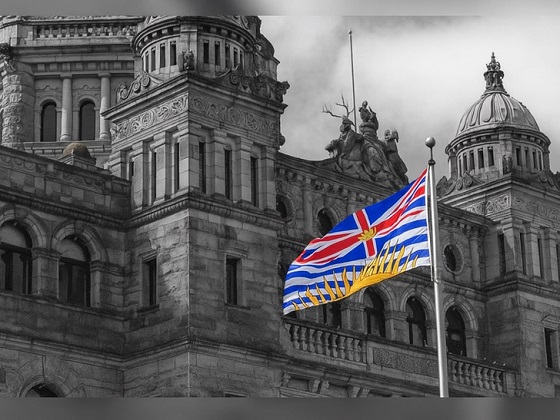
 Frontier Centre for Public Policy2 days ago
Frontier Centre for Public Policy2 days agoRichmond Mayor Warns Property Owners That The Cowichan Case Puts Their Titles At Risk
-
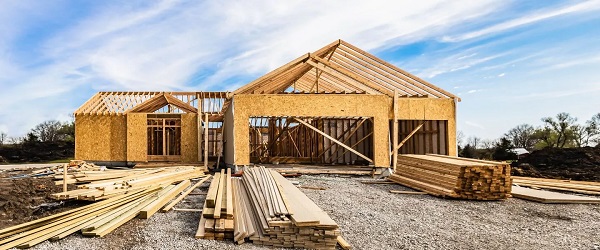
 Business2 days ago
Business2 days agoSluggish homebuilding will have far-reaching effects on Canada’s economy
-
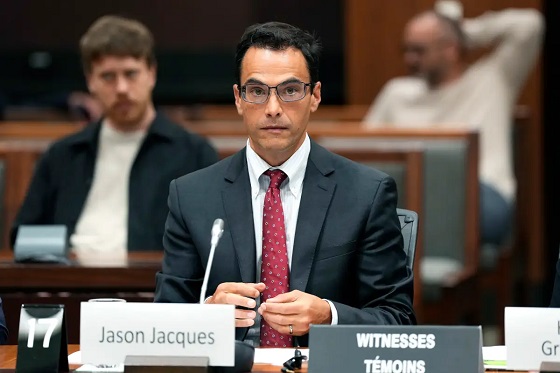
 Business2 days ago
Business2 days agoMark Carney Seeks to Replace Fiscal Watchdog with Loyal Lapdog
-

 Business2 days ago
Business2 days agoP.E.I. Moves to Open IRAC Files, Forcing Land Regulator to Publish Reports After The Bureau’s Investigation
-

 COVID-192 days ago
COVID-192 days agoMajor new studies link COVID shots to kidney disease, respiratory problems
-

 Addictions13 hours ago
Addictions13 hours agoCanadian gov’t not stopping drug injection sites from being set up near schools, daycares
-

 Business13 hours ago
Business13 hours agoParliamentary Budget Officer begs Carney to cut back on spending
-
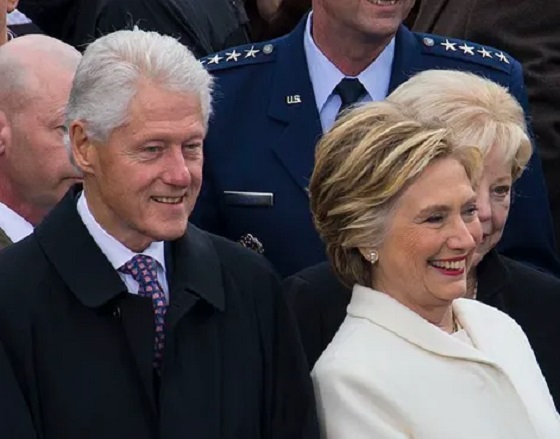
 International1 day ago
International1 day agoBondi and Patel deliver explosive “Clinton Corruption Files” to Congress






